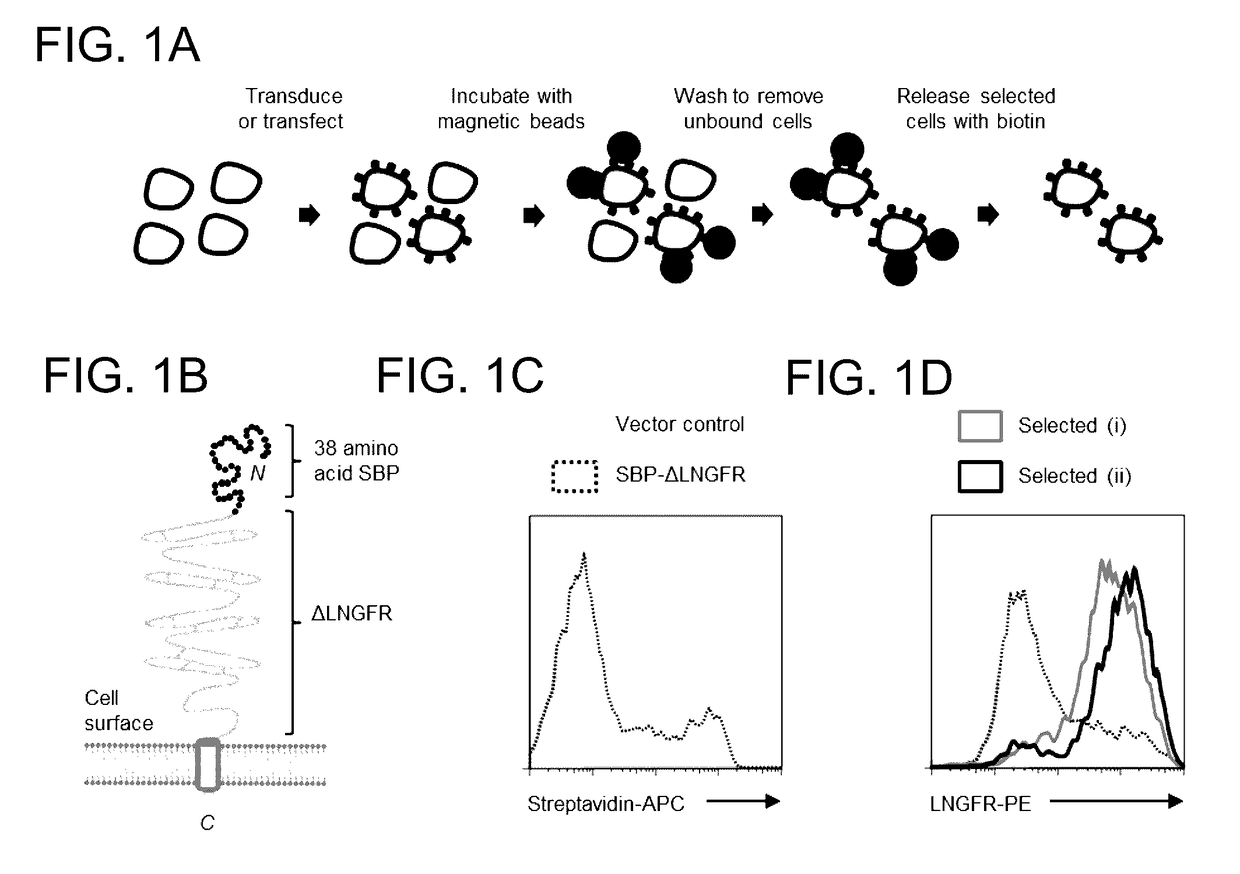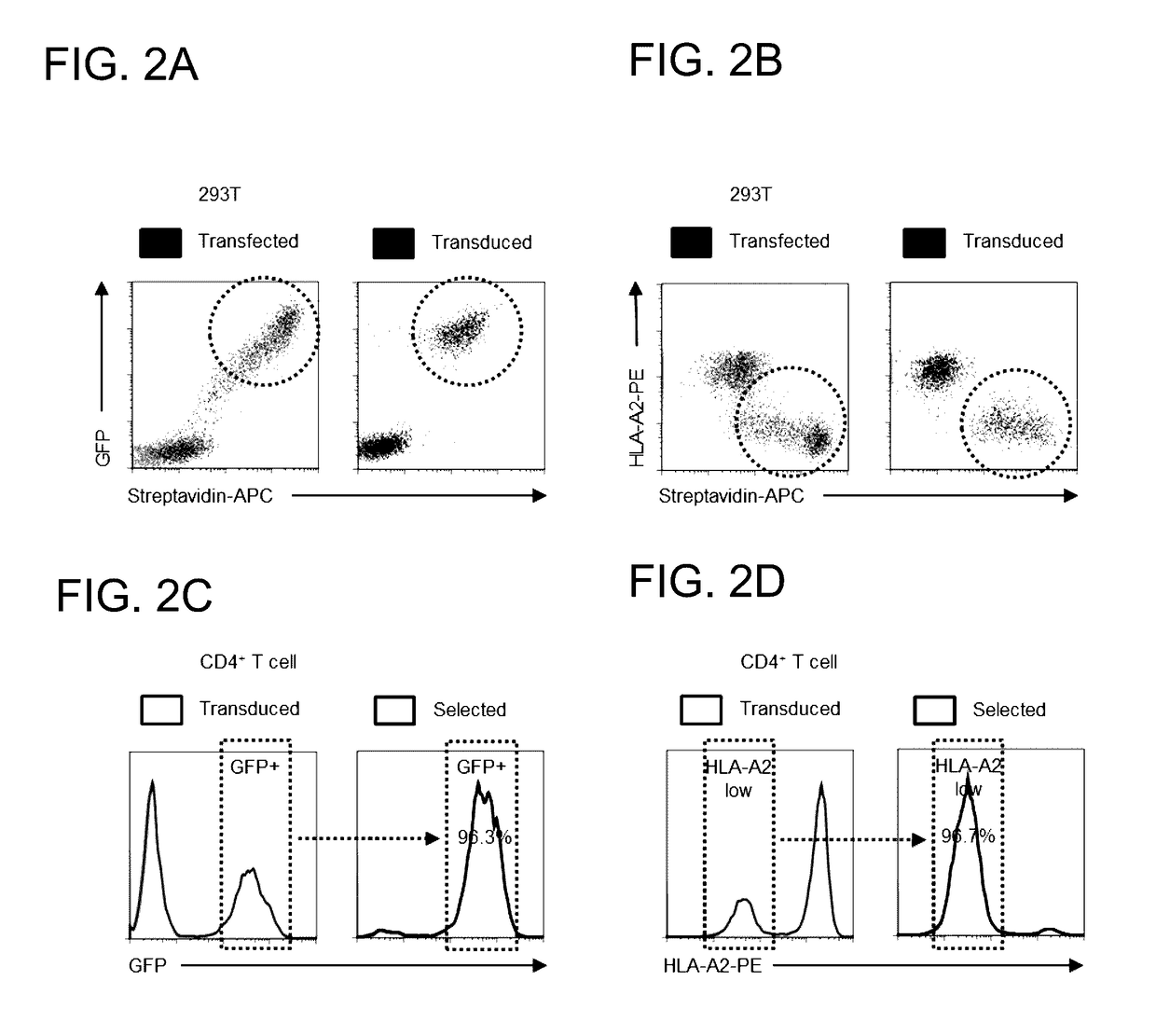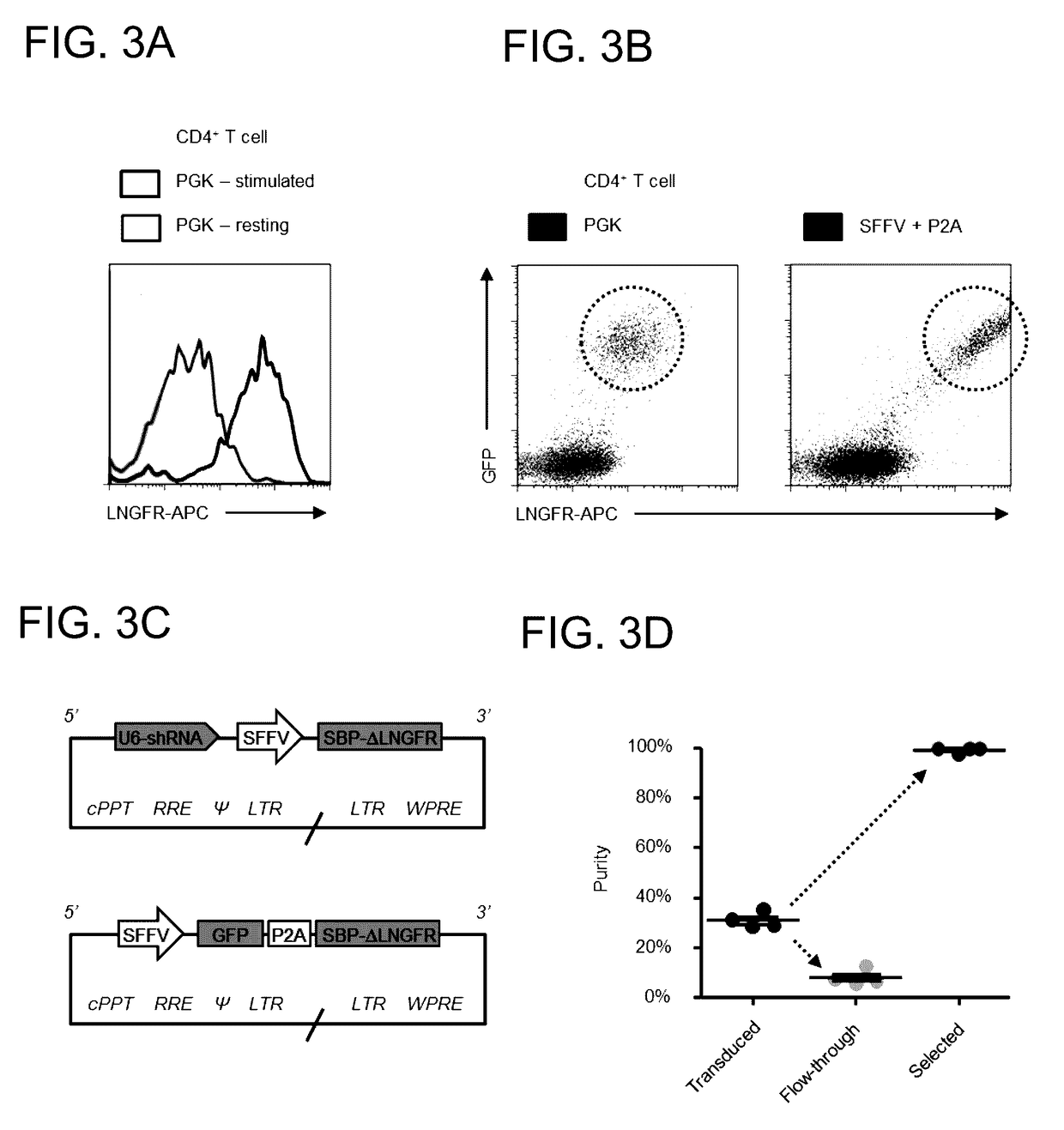Novel Method
- Summary
- Abstract
- Description
- Claims
- Application Information
AI Technical Summary
Benefits of technology
Problems solved by technology
Method used
Image
Examples
example 1
nt of Antibody-Free Magnetic Cell Sorting
Materials and Methods
Antibodies and Reagents
[0096]The following fluorescent conjugates were used for flow cytometry: ME20.4 anti-LNGFR-PE / APC (BioLegend); BB7.2 anti-HLA-A2-PE (BioLegend); W6 / 32 anti-MHC-I-AF647 (BioLegend); and streptavidin-APC (eBioscience). Bovine Serum Albumin (BSA) Cohn fraction V (A4503; Sigma) which does not contain free biotin was used for Antibody-Free Magnetic Cell Sorting.
[0097]HEK 293T cells (293 Ts) were cultured in Dulbecco's Modified Eagle Medium (DMEM) supplemented with 10% Fetal Calf Serum (FCS) and 1% penicillin / streptomycin. Primary human CD4+T cells were isolated from peripheral blood by density gradient centrifugation using Lympholyte-H (Cedarlane Laboratories) followed by negative selection using the Dynabeads Untouched Human CD4 T Cells Kit (Invitrogen) according to the manufacturer's instructions. Cells were cultured in RPMI-1640 supplemented with 10% FCS and 1% penicillin / streptomycin and ...
example 2
for Antibody-Free Magnetic Cell Sorting
[0111]The following protocol has been optimised for Antibody-Free Magnetic Cell Sorting of transduced primary human CD4+ T cells to maximum purity using Dynabeads Biotin Binder. It may be readily scaled for almost any cell number and adapted for other transfected or transduced cell types. It is important to note that:[0112]Adherent cells must be harvested with enzyme-free dissociation buffer[0113]All cells must be washed thoroughly to avoid carry-over of biotin from culture media[0114]Where indicated by the manufacturer, streptavidin-conjugated beads must be washed before use to remove preservative and / or free (unconjugated) streptavidin
Materials
[0115]
Incubation Buffer (IB)PBS without calcium / magnesium, pH 7.4Pre-cool on ice2 mM EDTA0.1% BSA (A4503; Sigma)Release Buffer (RB)Complete media e.g. RPMI-1640Pre-warm to 37° C.with 10% FCS and 1%pencillin / streptomycin10 mM HEPES buffer, pH 7.42 mM biotin
Protocol
[0116]1. If required, remove Dynabeads H...
PUM
| Property | Measurement | Unit |
|---|---|---|
| Surface | aaaaa | aaaaa |
| Affinity | aaaaa | aaaaa |
Abstract
Description
Claims
Application Information
 Login to View More
Login to View More - R&D
- Intellectual Property
- Life Sciences
- Materials
- Tech Scout
- Unparalleled Data Quality
- Higher Quality Content
- 60% Fewer Hallucinations
Browse by: Latest US Patents, China's latest patents, Technical Efficacy Thesaurus, Application Domain, Technology Topic, Popular Technical Reports.
© 2025 PatSnap. All rights reserved.Legal|Privacy policy|Modern Slavery Act Transparency Statement|Sitemap|About US| Contact US: help@patsnap.com



